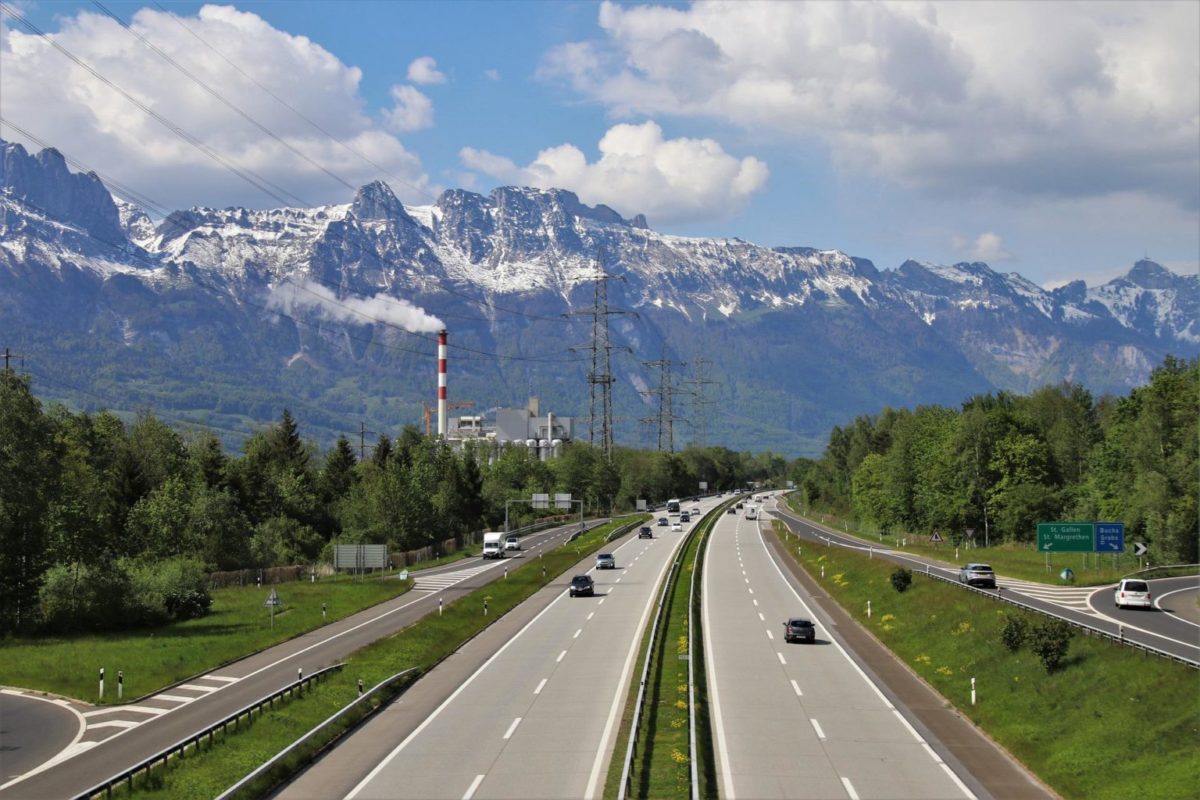From pv magazine France
At a meeting on Aug. 17, the Swiss Federal Council amended the National Roads Ordinance. It now allows the country to generate renewable energy on free spaces along major national highways. The revised text will go into force on Oct. 1.
This announcement follows clarifications that were made in 2020 in response to a parliamentary inquiry tabled by National Council Member Bruno Storni. They concerned the potential for PV production on noise barriers along motorways and railways.
Last year, the authorities said the potential for electricity production along motorways and railways was 101 GWh per year, including 46 GWh for railways and 55 GWh for national roads. The Federal Roads Office (FEDRO) is already partly exploiting this potential of 55 GWh for its own electricity consumption, particularly near tunnels and in maintenance centers.
Popular content
Other suitable surfaces such as noise barriers or rest areas will now be made available to third parties free of charge. The new provision also applies to any other installations intended for the production of renewable energy, such as wind or geothermal energy.
At the end of this year, the Swiss Federal Roads Office (FEDRO) will likely launch a call for applications to reserve areas for PV installations. Interested parties can submit an offer and, as soon as a lot is awarded, they will be assigned a precise timetable to build PV.
One of the conditions imposed on the use of surfaces belonging to FEDRO is that the third parties themselves ensure the sale of the electricity. Further details will be communicated later when the call for tenders is published.
This content is protected by copyright and may not be reused. If you want to cooperate with us and would like to reuse some of our content, please contact: editors@pv-magazine.com.



12 comments
By submitting this form you agree to pv magazine using your data for the purposes of publishing your comment.
Your personal data will only be disclosed or otherwise transmitted to third parties for the purposes of spam filtering or if this is necessary for technical maintenance of the website. Any other transfer to third parties will not take place unless this is justified on the basis of applicable data protection regulations or if pv magazine is legally obliged to do so.
You may revoke this consent at any time with effect for the future, in which case your personal data will be deleted immediately. Otherwise, your data will be deleted if pv magazine has processed your request or the purpose of data storage is fulfilled.
Further information on data privacy can be found in our Data Protection Policy.